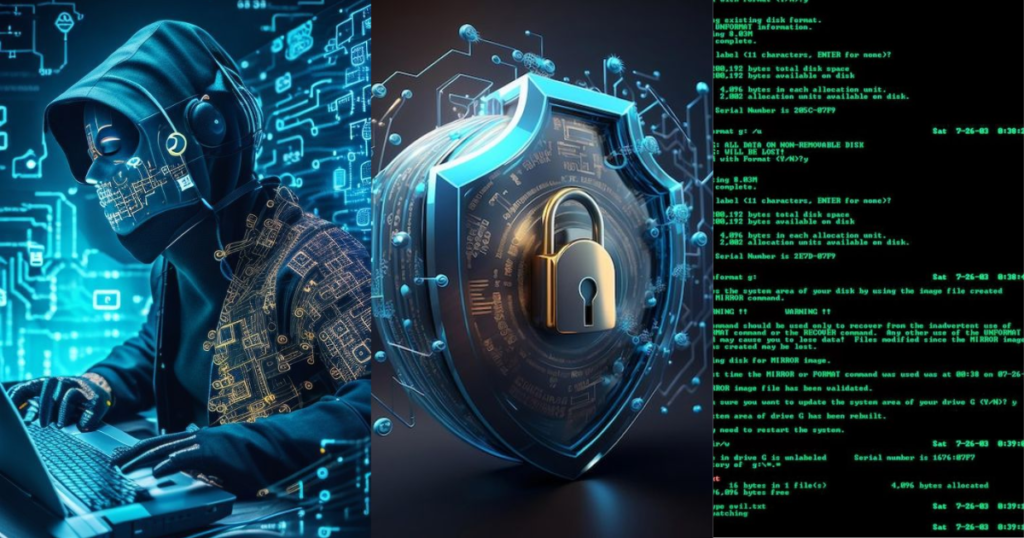In today’s digital age, the internet has become an integral part of our daily lives. We rely on it for everything from communication and information to entertainment and financial transactions. However, with the benefits of the internet come the risks. Cybersecurity threats are on the rise, and it’s more important than ever to understand the risks and take steps to protect ourselves. In this guide, we’ll delve into the world of cybersecurity, exploring the best practices and strategies to keep you safe online.
Cybersecurity refers to the practices, technologies, and processes designed to protect digital information, networks, and systems from unauthorized access, use, disclosure, disruption, modification, or destruction. This includes protection against malware, viruses, hacking, phishing, and other types of cyber threats.
Types of Cyber Threats
- Malware: Software designed to harm or exploit a computer system, such as viruses, worms, and trojans.
- Phishing: Fraudulent emails, texts, or messages that trick individuals into revealing sensitive information.
- Ransomware: Malicious software that demands payment in exchange for restoring access to data.
- Denial of Service (DoS) and Distributed Denial of Service (DDoS): Overwhelming a system with traffic to make it unavailable.
- Social Engineering: Manipulating individuals into revealing sensitive information or performing certain actions.
Best Practices for Cyber Security
Cybersecurity is all about layers. Implementing multiple layers of protection is the best way to keep your digital life safe. Here are some best practices to get you started:
Password Management
- Use strong, unique passwords: A strong password is a combination of letters, numbers, and special characters that is at least 12 characters long.
- Use a password manager: A password manager can generate and store unique, strong passwords for each of your accounts.
- Enable two-factor authentication (2FA): 2FA adds an extra layer of security to your accounts by requiring a second form of verification, such as a code sent to your phone or a biometric scan.
Software Updates and Patching
- Keep your operating system up to date: Regular updates often include security patches that fix vulnerabilities in your operating system.
- Update your software: Keep your software up to date, including web browsers, productivity software, and security software.
- Patch vulnerabilities: Regularly patch vulnerabilities in your software and operating system to prevent exploitation by cybercriminals.
Firewall and Network Security
- Enable your firewall: Your firewall is your first line of defense against cyber threats. Enable it and configure it to block incoming connections.
- Secure your network: Use WPA2 encryption (or WPA3 if available) to secure your network and prevent unauthorized access.
- Use a virtual private network (VPN): A VPN encrypts your internet traffic and hides your IP address, making it harder for cybercriminals to intercept your data.
Data Encryption
- Use full-disk encryption: Full-disk encryption encrypts all data on your device, making it unreadable to unauthorized users.
- Use file-level encryption: File-level encryption encrypts individual files, making them unreadable to unauthorized users.
- Use end-to-end encryption: End-to-end encryption encrypts data in transit, making it unreadable to anyone except the sender and recipient.
Backup and Recovery
- Backup your data regularly: Regular backups ensure that your data is safe in case of a cyber attack or hardware failure.
- Use the 3-2-1 rule: Keep three copies of your data, store them on two different types of media, and keep one copy offsite.
- Test your backups: Regularly test your backups to ensure that they are complete and recoverable.
Cyber Security Strategies
Implementing cybersecurity best practices is just the first step. You also need a comprehensive strategy to manage risk, respond to incidents, and continuously monitor your systems.
Risk Management
- Identify your risks: Identify potential risks to your digital assets and prioritize them based on likelihood and impact.
- Assess your risks: Assess your risks and determine the likelihood and potential impact of each.
- Mitigate your risks: Implement controls to mitigate your risks, such as firewalls, encryption, and access controls.
Incident Response
- Have an incident response plan: An incident response plan outlines the steps to take in case of a cyber attack.
- Identify the incident: Quickly identify the incident and determine its scope and impact.
- Contain the incident: Contain the incident to prevent further damage.
Identity and Access Management
- Implement access controls: Access controls determine who has access to your digital assets and what they can do with them.
- Use multi-factor authentication: Multi-factor authentication adds an extra layer of security to your access controls.
- Regularly review access: Regularly review access to ensure that only authorized personnel have access to your digital assets.
Network Segmentation
- Segment your network: Segment your network into different zones, each with its own access controls.
- Limit access: Limit access to each zone to only those who need it.
- Monitor traffic: Monitor traffic between zones to detect potential threats.
Continuous Monitoring
- Monitor your systems: Continuously monitor your systems for signs of suspicious activity.
- Use security information and event management (SIEM) software: SIEM software helps you monitor and analyze security-related data from various sources.
- Regularly review logs: Regularly review logs to detect potential threats.
Conclusion
In this comprehensive guide, we’ve explored the vast landscape of cybersecurity, delving into the importance of password management, software updates, and data encryption. We’ve discussed the significance of cybersecurity strategies, including risk management, incident response, and continuous monitoring, and examined cybersecurity for both individuals and businesses, highlighting the need for employee education, network security, and compliance with regulations. Finally, we’ve touched on emerging trends like AI, cloud security, IoT security, and 5G network security. By mastering these concepts, you’ll be well-equipped to navigate the digital world with confidence, protecting your valuable data and systems from cyber threats.



